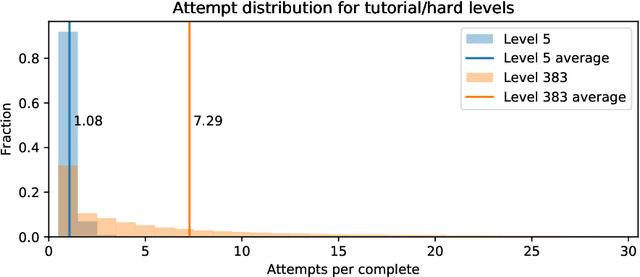Difficulty Modelling in Mobile Puzzle Games: An Empirical Study on Different Methods to Combine Player Analytics and Simulated Data
Paper and Code
Jan 30, 2024



Difficulty is one of the key drivers of player engagement and it is often one of the aspects that designers tweak most to optimise the player experience; operationalising it is, therefore, a crucial task for game development studios. A common practice consists of creating metrics out of data collected by player interactions with the content; however, this allows for estimation only after the content is released and does not consider the characteristics of potential future players. In this article, we present a number of potential solutions for the estimation of difficulty under such conditions, and we showcase the results of a comparative study intended to understand which method and which types of data perform better in different scenarios. The results reveal that models trained on a combination of cohort statistics and simulated data produce the most accurate estimations of difficulty in all scenarios. Furthermore, among these models, artificial neural networks show the most consistent results.
 Add to Chrome
Add to Chrome Add to Firefox
Add to Firefox Add to Edge
Add to Edge